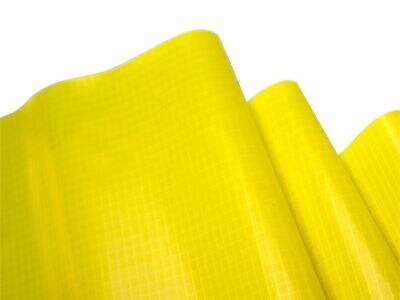TPU fabric is much more focused on waterproofing. So it tells us how well TPU fabric resists water and how well it keeps water out. When it comes time to specify fabric for items or products, this is helpful. Not all fabrics are created equal when we consider waterproof materials, so it’s worth knowing. Certain fabrics repel water well, while others are less effective. Therefore, being aware of waterproofing can aid in making better choices in fabric selection for a given purpose.
Their TPU fabric is very good at keeping water out, and Xianglong Polymer Fabric is the name of the company. They have put in a lot of work to develop a fabric that can be water-resistant. But the water still has to be dealt with, despite their fabric being fantastic. Making a good fabric is not just what we focus on, it is also how we use and care for it. That’s why the waterproofness of TPU fabric should be verified before deploying it in jackets, tents and other outdoor gear.
Methods for Testing TPU Fabric Waterproofness
There are different methods used by scientists to check for waterproof-ness of TPU fabrics. One method is the hydrostatic pressure test. This test measures how much pressure the fabric can withstand before water starts to seep through. It’s like looking at how strong a wall is compared to water pushing on it.
A different form of testing is the spray test. The "fast wetting" test involves spraying water onto the TPU fabric quickly, to create an effect where the fabric maintains a spa bubble layer that prevents the water from getting to the fabric itself. The Laminated TPU Film Fabric concept is to gauge how well the fabric sheds water, much like a duck’s feathers when the feathered creature swims. There is also one test in which the fabric is submerged in water to measure how long it takes for water to pass through. Knowing this can let us know whether or not the fabric is genuinely waterproof, or if water will seep through after some time.
Things to Think About
It is very important to consider what the TPU fabric will be used for when checking its waterproofness. As an example, someone who is making a raincoat requires the fabric to be extremely waterproof because raincoats are used to keep people dry in wet conditions. If water comes through a rain coat, it cannot do its job well.
But if a person uses that same fabric for a tent or a backpack, they may care more about how strong and durable the fabric is. While TPU fabric is technically very waterproof, it waterproof tpu fabric baby must also be durable enough for camping and hiking. A tent or backpack is going to be subjected to rough conditions, and if the fabric tears easily, it won’t help at all, no matter how waterproof it is.
How to keep your TPU fabric waterproof
There are many factors that go into how waterproof TPU fabric is. One big consideration is the quality of the coating (on the fabric). A good coating could significantly affect something ability the fabric to repel water. Other tpu film laminated fabric factors are the thickness of the fabric and the way it has been woven or knitted. Thicker fabrics may better keep water from penetrating than thinner ones.
And we need to keep in mind how dust, dirt, oil, and even sweat can impact the waterproofness of the fabric. For instance, when a fabric gets dirty, it might not repel water as it should. This is why good care is key for TPU fabric items. Regular cleaning and maintenance will ensure that they retain their waterproof properties for an extended duration.
A New Method to Waterproof TPU Fabric
But as these technologies improve, new methods for making TPU fabric waterproof are born. This also means that TPU fabric will only become more water-resistant as time goes on. There is an ongoing effort by engineers and researchers to develop a new way to enhance the performance of the fabric.
Ranging from improved coatings that are even more effective to new weaving and knitting techniques, allowing for tighter weaves, the future of TPU fabric waterproofing isn’t so grim after all. Xianglong Polymer Fabric is at the forefront of the most modern methods of waterproofing our fabric as efficiently as possible. These improvements, combined of the new hardware specifications, will allow us to offer an even better product.
We can determine what kind of fabric we need for our application by testing the waterproofness of the TPU fabric. Considering the quality of the coating, its thickness and end use can help us select the right fabric for our projects. In Xianglong Polymer Fabric we are always working on our technology and methodology to develop highly waterproof fabric. This guarantees that our customers know they are receiving a quality product that will keep them both dry and protected.

 EN
EN
 AR
AR
 BG
BG
 HR
HR
 CS
CS
 DA
DA
 NL
NL
 FI
FI
 FR
FR
 DE
DE
 EL
EL
 HI
HI
 IT
IT
 JA
JA
 KO
KO
 NO
NO
 PL
PL
 PT
PT
 RO
RO
 RU
RU
 ES
ES
 SV
SV
 CA
CA
 TL
TL
 IW
IW
 ID
ID
 LV
LV
 LT
LT
 SR
SR
 SK
SK
 SL
SL
 UK
UK
 VI
VI
 TH
TH
 TR
TR
 FA
FA
 GA
GA
 BE
BE
 BN
BN




